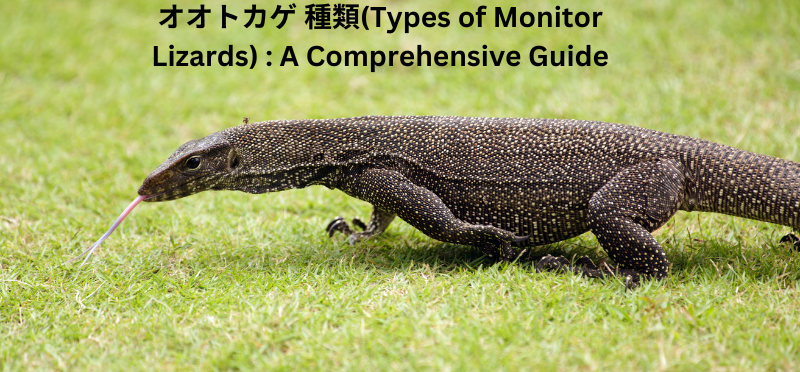オオトカゲ 種類, or (Types of Monitor Lizards) : A Comprehensive Guide, are a fascinating group of reptiles known for their impressive size, intelligence, and adaptability. With a wide distribution across various regions, these creatures have evolved into diverse species, each with its unique characteristics. In this article, we will delve into the different types of オオトカゲ, exploring their habitats, behaviors, and the challenges they face in the wild.

Taxonomy and Classification
monitor lizards belong to the family Varanidae, which includes more than 80 species. They are further categorized into two subfamilies: Varaninae, represented by the larger monitors, and Lanthanotinae, which includes the Komodo dragon. The taxonomy of オオトカゲ is continually evolving as researchers discover new species and refine existing classifications.
must read= Taylor Swift 2048 | what is Monitor_lizard
オオトカゲ 種類 (monitor lizards): Varaninae Subfamily
1. Komodo Dragon (Varanus komodoensis)
The Komodo dragon, native to the Indonesian islands, is the largest living lizard on Earth. Known for its massive size and powerful jaws, this apex predator primarily preys on deer, wild boars, and other large animals. Despite their formidable appearance, Komodo dragons face conservation challenges due to habitat loss and human-wildlife conflicts.
2. Nile Monitor (Varanus niloticus)
Found in various African countries, the Nile monitor is a highly adaptable species with a diet ranging from fish to small mammals. Recognized for their exceptional climbing abilities, these monitors thrive in diverse environments, from savannas to wetlands. However, their adaptability has also led to their establishment as invasive species in some regions.

3. Water Monitor (Varanus salvator)
Native to South and Southeast Asia, the water monitor is a semi-aquatic species often found near rivers, lakes, and mangroves. These monitors are excellent swimmers and are known for their voracious appetite, feeding on fish, amphibians, and even carrion. Their attractive patterns and colors make them popular in the exotic pet trade, posing a threat to their wild populations.
Smaller Monitors: Varaninae Subfamily
1. Black Tree Monitor (Varanus beccarii)
Endemic to the Aru Islands of Indonesia, the black tree monitor is a smaller species with a slender body and prehensile tail. Arboreal in nature, they spend a significant amount of time in trees, hunting insects and small vertebrates. Despite their limited distribution, these monitors face habitat destruction due to logging and agriculture.

2. Savannah Monitor (Varanus exanthematicus)
Native to the savannas of Africa, the savannah monitor is a popular choice in the pet trade due to its manageable size and docile nature. However, improper care and the demand for wild-caught individuals have raised conservation concerns. Efforts are being made to promote responsible breeding and captive care to safeguard wild populations.
Conservation Challenges and Efforts
While some オオトカゲ species thrive in their natural habitats, many face significant threats. Habitat destruction, climate change, and the illegal pet trade contribute to population declines in various monitor lizard species. Conservation initiatives, such as habitat protection, captive breeding programs, and public awareness campaigns, are crucial for ensuring the survival of these remarkable reptiles.
Conclusion
オオトカゲ, with their diverse range of species, showcase the wonders of evolution and adaptation. From the mighty Komodo dragon to the agile black tree monitor, each species plays a unique role in its ecosystem. As we continue to learn more about these fascinating creatures, it becomes increasingly important to prioritize their conservation and ensure a harmonious coexistence between humans and monitor lizards in the wild.




